No Results Found
The page you requested could not be found. Try refining your search, or use the navigation above to locate the post.
selected branch:
yard sale starting soon!
Day(s)
:
Hour(s)
:
Minute(s)
:
Second(s)
yard sale starting soon!
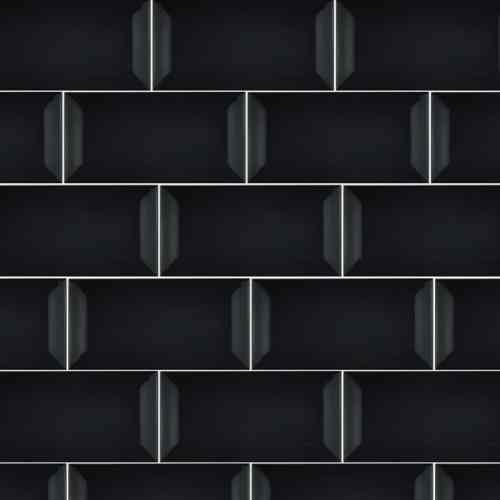
With a wide selection to choose from, it’s natural to feel a bit intimidated or overwhelmed when purchasing tiles for your home. Since this can become such a high-involvement purchase, here are some factors to consider to help you along the way.
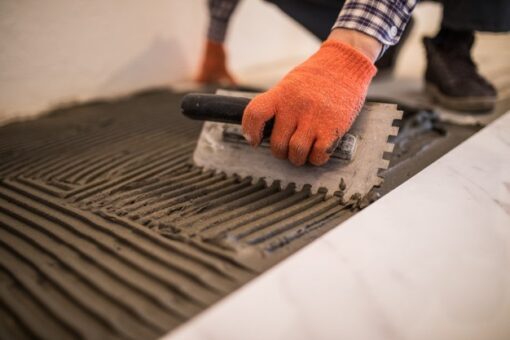
Before looking at your different options for tiles, you need to determine whether it will be installed indoors or outdoors. This is important as tiles for exterior spaces need to meet certain safety regulations such as being slip and thermal shock resistant. The selection is also dependent on the type of outdoor area i.e., whether you have a pool, lawn, etc. Generally, outdoor tiling requirements have a slip resistance coefficient greater than 0.4 when wet. This is often expressed as an R rating and a ratio of R11 or more is recommended for poolside’s. Popular outdoor tiling mimics the textures of natural stone and are not monolithic.
Indoor tiling doesn’t require as many considerations as outdoor tiling. You can choose indoor tiling purely based on aesthetics. It is, however, important to note that not all tiles can be used for flooring purposes as floors need to be able to withstand continuous stress, abrasion and chemicals.
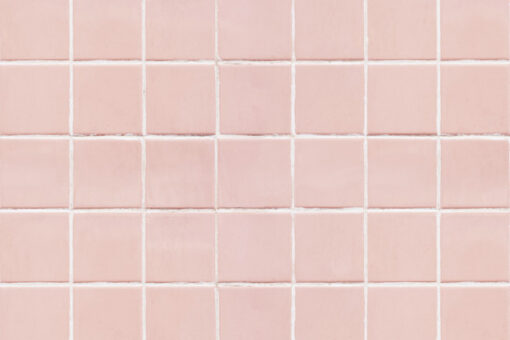
In order to determine the size of the tiles you purchase, the design of the space needs to be considered. Larger-scale tiles can be more modern, impactful and make a smaller space seem bigger. For a more traditionally-styled space, opt for smaller-scale tiles.
Large tiles with the dimensions 90 x 90 cm or 120 x 60 cm sizes are increasingly popular. Their installation requires less effort, and they are great for tiling both walls and floors.
Regardless of the size of the tile, it is advisable to purchase at least 10% more than necessary in case of breakage and cutting during the project. It is also good to have any spares for future use.

With many different finishes to choose from, you need to find one that best suits your style, including polished, matt, metallic, satin, etc. Naturally, different finishes are made from different materials and require different levels of maintenance. Some are more slip-resistant, durable and easier to clean than others. While making choices based on how aesthetically pleasing certain tiles are, it is important to take all these factors into consideration.
Need more advice on what tiles you want to fill your home with? Visit your nearest Tiletoria store and our sales representatives will be more than happy to advise you on which tiles they think will be best suited to your application.
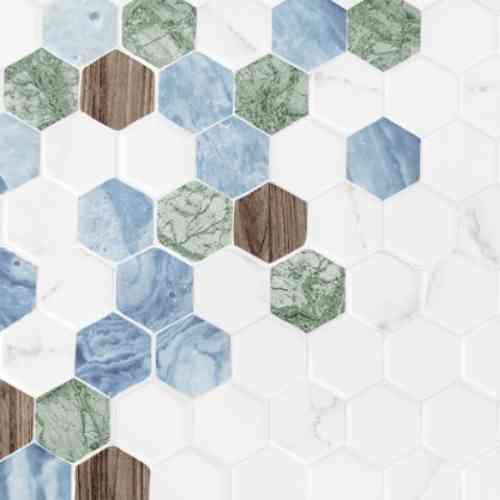
In summary, the difference between porcelain and ceramic tiles is the way they are produced. Porcelain is created in a more controlled manufacturing process, resulting in a less porous, homogenous tile with more durability. Due to these properties, this tile works well in high foot traffic areas such as shopping malls and schools. Ceramic, on the other hand, is a mixture of clay and minerals, resulting in a more interesting and unique looking tile.
The finishes for ceramic tiles include polished, shiny, satin, matte, or natural.

Retro white tiles textured background
They are a durable material, but it really depends on the installation of the tiles. For optimal durability, the base on which the tiles are glued should be flat and have no irregularities. The manufacturers should have recommendations for best installing the tiles and that should be carefully and strictly followed in order to achieve the best results.
Rectified tiles are ones that go through a cutting process of grinding, which makes all pieces the same size. As a result, the grout gaps are minimal, making for a more aesthetically pleasing assembly.
Naturally, you will need to know the area of the space in order to determine the number of tiles required. It’s advisable to purchase more tiles than the exact number of ties required since there may be breaks and cut-outs. Uniquely shaped floor plans will require an even larger number of tiles due to cutting.

Practically any floor tile can be installed on the wall but not all wall tiles can be installed on a floor. Make inquiries from the manufacturer or outlet store before purchasing.
While it is not the smartest option as you’ll have to alter the height of your doors as well, it is possible to install tiles on top of other tiles provided the surface below has been correctly installed and is not broken.
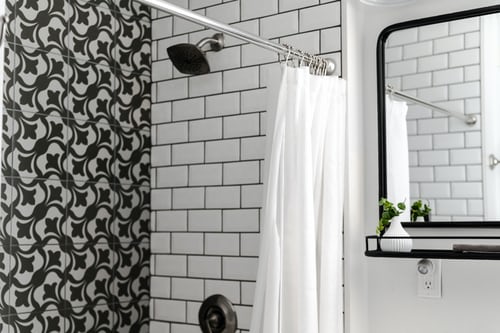
To determine whether a tile is non-slip, you can look at its dynamic friction coefficient, which is an index of slip resistance. The higher the number, the more ‘non-slip’ the tile is.
It is possible, but not all paints work. Highly waterproof and smooth surfaces require highly adhesive paint. It is also necessary to prepare a base for painting for a more efficient result.

Buying a home for the whole gang? Here are some things you should consider beforehand.
The process of purchasing a home becomes a little more complex when it’s a space you’re looking to raise children in as there is a lot more to consider such as the location, space and safety. Naturally not everyone is by the means to choose the most spacious homes with the most high-tech safety features for their children to grow up in, but there are measures you can take to ensure your family has a space that works best for them.
The size of your space makes all the difference
When purchasing a family home, size is an important consideration. Children thrive in environments where they are able to run and play freely, and a home with minimal space can affect your sanity and growth. If an outdoor space is not an option for you, consider purchasing a home with a spacious living room or spare bedroom that can be converted into a play room or game room as an alternative. The main concern is that your child has sufficient space to be a child, essentially.
Practicality is key
Search for homes with practical features such as sufficient storage, bathrooms, dining space, laundry area, wall sockets etc. Having a home full of people can easily get chaotic so ensuring everyone has their space will really assist your household in running smoothly, especially if there are many people running on the same daily schedule.
Safety first
In the dangerous world we live in, safety is of the utmost importance when choosing a suitable home for your family. Knowing that your home is as safe as possible will alleviate some of your stress as a parent. It’s more than choosing a home that is safe from the dangers beyond your property but also concerns the layout and safety measures from within your home. For example, it’s easier to supervise young children in an open-plan space than one with walls.
Examples of some of the questions you should be asking yourself:
There are also issues that extend beyond your property line such as:
Location is everything
Choosing a home that is within a decent proximity to important places such as schools, a grocery store, extracurricular activities, at least one or two family members, etc. makes your living environment a much more comfortable one and you can have peace of mind knowing your family is more taken care of.
While having the added pressure of making family-friendly decisions when purchasing a home can be tough, choosing the right space that keeps everyone happy and safe will certainly pay off in the long run!
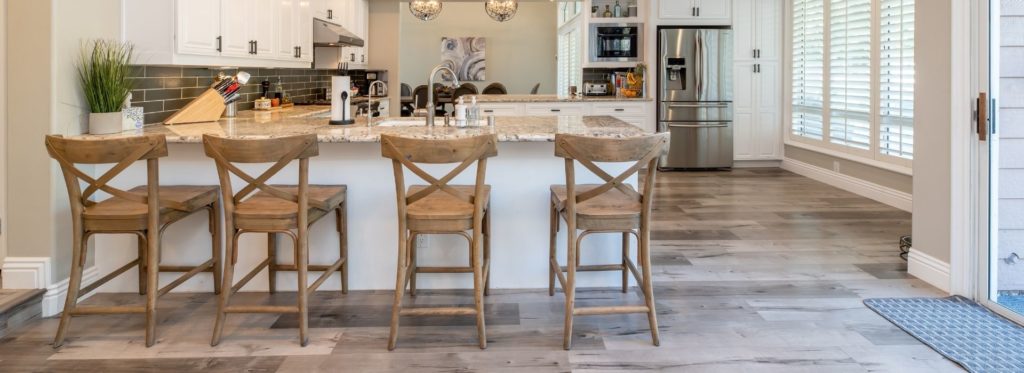

With a reduced interest rate, high rates stock and of home loan approvals, if there’s ever a time to invest in a home, it’s now. While it may seem like a daunting process to navigate, preparing yourself will make all the difference. Here are 10 simple steps to take advantage of the property buyer’s market.
Establish your budget
Your very first step should be establishing how much you have to purchase a home and how much you are willing to spend. In order to qualify for a home loan, you’ll require a good credit score, which your bank or mortgage originator can assist you with. The consensus is that your bond repayment should not exceed a third of your monthly income.
Be prepared for a down payment
While first time buyers qualify for a home loan of up to 105%, you may need a cash security deposit of 10-15%. Investing your deposit is highly advisable as it brings the rate of your monthly repayments down and allows for an equity buffer of value in assets over liabilities.
Make provision for extra costs
Transfer duty, bond registration and conveyancing means you need to account for additional costs. For all home purchases over R900 000, there is a transfer duty cost. Don’t forget all the moving costs when relocating to your new home!
Be prepared for paperwork
Naturally purchasing a home means having to deal with a lot of admin, so it’s best to be prepared and get everything in order to alleviate any unnecessary stress. The paperwork required includes certified copies of IDs, marriage certificates (Ante Nuptial Contract where applicable), three months’ payslip plus 3 – 6 months’ current bank statements.
Decide where you want to live
The location you choose to move is vital as it should align with your everyday life as best as possible. Firstly, decide on the type of home you’d like to live in e.g. a house vs flat vs. studio loft, etc. Thereafter, decide the kind of area you’d like to live in and which qualities you prioritise in a neighbourhood. Narrow it down to a few and weigh up the pros and cons for each so that you make the decision best suited for you/ your family/ housemates.
Try searching for a home online first
Before going to open houses and viewings, have a look at potential homes online first to get a better look and feel of what you’d like in a home. Technology creates the huge benefit of online tours and viewings.
Hit the ground running
Make sure you mean business when viewing potential homes. Be extremely vigilant when going to viewings and look out for structural issues and poor maintenance before making any decisions. Should you want a home regardless of the future costs you will incur for fixing any issues, make the relevant negotiations with the owners.
Time for a home loan
A purchase offer is a legal contract which once accepted, requires you to secure a home loan. If you’re working with a real estate agent, they will assist you with this however you can attend to it on your own as well. The set of documents you were advised to gather before is now required. Once your bond is approved, it’s on to the next step!
Attorney time
At this point, the seller of the house will appoint a conveyancing attorney and the bank will appoint an attorney to handle the bond registration. At this point you will need to present the documents you acquired such as your ID, marriage certificate, payslips, etc. along with the deposit of the home where applicable and the transaction costs, which gets paid to the conveyancing attorney.
The conveyancer then prepares documents and makes the necessary payments in order to obtain a rates and service clearance certificate. Thereafter, the conveyancer lodges the documents in the local deeds office where they are inspected and once they are approved, the transfer is officially registered, which can take up to three months.
Getting ready to move
While waiting for the transfer to register, it’s advisable to prepare for the move. The conveyancer will inform you once the transfer is registered. If you are purchasing your home in cash, the title deed will be sent to you. If you are taking out a mortgage loan, it will be sent to the bank. Thereafter your bond repayments will commence and you can settle into your new space.


The colour palette and decor in your space could easily be the difference between a good home and a great one. While it’s important to bring your personal style into your home, a fresh change is always good if you are by the means to make one. Say goodbye to marble countertops and perfectly sleek spaces and say hello to bold colours and vibrant wallpapers with these top interior design trends for 2021.

Classic Blue
Classic Blue was selected as the colour of the year for 2021. The blues no longer signify sadness. Blue is synonymous with calmness, confidence, wisdom and stability, among other wonderful things. Resembling the endless sky at dusk, classic blue is a timeless hue, so it’s a good choice of colour to incorporate in your home through a statement wall or pops of classic blue decor, best suited for bedrooms or lounging spaces.

Neo Mint
Another strong contender in 2021’s top interior design colours is a pastel green, which has been coined ‘Neo Mint.’ A calming, fresh tone; this colour is sure to brighten up and modernise your space while adding an optimistic charm. Neo Mint is a softer, more comforting tone best suited for bathrooms and kitchen areas.
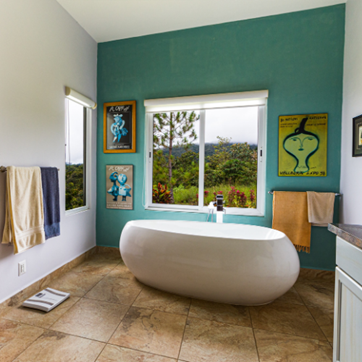
Bold monochromatics
Shying away from brighter shades is a thing of the past, with bold colours becoming a prevalent theme for 2021. Incorporate pops of colour into your home through artwork, ceramics, statement walls, etc. Colour blocking through bright primary colours adds an interesting appeal and
Mixing old and new design
“Something old, something new” is no longer reserved for walking down the aisle, with the marriage of modern and classic becoming an appealing aesthetic for lounging spaces inthe home. The juxtaposition creates an eclectic feel and tastefully contradicts the perfectionism in spaces that has been challenged with 2021 trends.
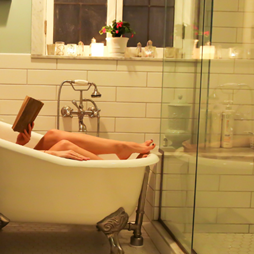
Fun with bathroom designs
A room that’s often ruled out as one to have fun with, the bathroom is a space with great potential. Forget the sleek bathroom design the 2010s have been known for and experiment with colourful wallpaper and bold bathroom decor to add some allure to a famously bland room.
Rattan and wicker furniture
For an earthy, rustic aesthetic, rattan and wicker furniture does the trick. What was once a more prevalent trend for outdoor home decor has moved its appeal indoors. A statement chair in your lounging area or dining chairs are a subtle yet impactful way to incorporate the trend into your home.
(Real) house plants
Greenery has become a huge trend over the last year and shows no signs of slowing down with practically every trendy space being filled with plants and ‘plant parenting’ soaring on social media. Understandably so, house plants add a wonderful charm to your space while giving it life and bringing a sense of serenity. Plus, it’s quite an inexpensive addition compared to most decor pieces.

Earth tones
In 2021, it’s out with cool tones and in with earth tones. Shades of brown, olive green and yellow ochre are on the rise and combined while light blues, greys and lilacs are on its way out. Combined with house plants, the earthy tones trend really thrives, making your home your very own sanctuary.
Multi-functional spaces/ home offices
With 2020 being the year many jobs become remote, home offices are a prevalent interior design trend. Spaces are becoming more functional in areas such as kitchens, lounges and bedrooms that were once strictly for relaxation and leisure. Spare bedrooms and unutilised spaces are also being transformed into home offices.
Floral wallpaper
For ages this trend has been strongly associated with grandmothers, but it can be a wonderful way to easily add vibrancy to your home while creating personality in your space. If you’re concerned about overwhelming your home with too much floral, incorporate it into an accent wall for a more subtle touch.

If you need some inspiration, make sure that you chat to our friendly staff at your closest Tiletoria showroom. We have exciting mood boards and experienced staff that work with some of the best interior designers in South Africa that would be delighted to give you their opinion.

Property is one of the most wonderful investments you could make. Getting your credit profile sorted is a big and necessary step to succeeding at your home loan application and obtaining your own. Experts suggest that investing a portion of your monthly salary into a home loan in order to secure your own property is a far better financial investment than paying rent on a monthly basis to finance someone else’s bond. Credit score is categorised according to its level of risk, ranging from very high risk (bad credit score) to minimum risk (good credit score). In South Africa, a minimum risk ranges from a credit score of 650-999, with 700 considered a good score and anything above 767 being excellent. Your credit rating is something you can start immediately working at improving. Below are a few top tips for keeping a healthy credit score.
Cover all your bills on time
Make sure that you pay all of your outstanding bills on time. Approximately 35% of your credit profile is based on your payment history, meaning late payments will negatively affect your score. Even if you haven’t been the most consistent with paying your bills on time in the past, you still have the opportunity to get back on track. Paying a little more than the minimum monthly requirement along with a history of prompt payment will do the trick!
The 50/30/20 rule
US senator, Elizabeth Warren and her daughter Amelia created a rule of splitting your income in three parts: 50% for your monthly essentials (needs), 30% for personal spending (wants) and 20% for your financial goals (savings, investments, etc.), with the money set aside for your financial goals in a separate account.
Minimise your overall debt and maintain low credit card balances
The higher your credit card balance is in relation to your credit limit, the worse the implication for your credit score. 30% of your credit score is based on your outstanding percentage of debt. Experts suggest keeping your debt percentage at no more than 20-30% of your income. A track record of good debt repayment also makes it easier to open new accounts.
This begins with reducing your overall consumption to ensure that you have enough disposable income to cover your debts on overdrafts or your retail accounts. As previously mentioned, paying slightly above the minimum amount required to clear your debt as this is a good habit for becoming debt-free faster. Keep this habit going until you manage to get your total debt below 30% of your income, or even better – clear it.

The older the account, the better for your credit score
Naturally, it’s a lot easier to gain new credit if you have a good track record. 15% of your total credit score is dependent on the age of your credit accounts, so a longer history of good credit is beneficial. Closing older accounts to open new ones could mess up your credit rating algorithm as it is a sign of poor credit management. Keeping your older accounts such as your credit card and making the monthly repayments signals good financial management, making you a much more favourable candidate for receiving a loan.
Good management is golden
10% of your total credit score is based on the way you manage your debt. Therefore, paying off your debts with high interest rates is good but it’s wise to keep an account or two open that you’re able to comfortably pay off monthly in order to show that you are able to manage your finances well. Contact the credit bureau once you’ve gotten your debt down in order to update your profile and have your past judgements removed from your profile.
Timing is everything
10% of your total credit score is based on the amount of new loans or loan inquiries you’ve made over a particular period of time. Therefore, wait until you’re completely ready to take out a bond before you make enquiries and complete the process within 45 days so it’s seen as a single loan enquiry. The search for a single loan versus multiple loans will once again signal better management.
Remember to be as consistent with maintaining a good credit score as possible, as it will greatly benefit your future financial decisions.
Once you have succeeded at your home loan application and you want to renovate your new space to fit your personal preference, please pop down to your nearest Tiletoria where our friendly staff will be waiting to assist you.
Please select the branch closest to you ...
Pricing and stock information displayed on this site will be of the branch you select.
It will remain your default branch until you change it.
All prices are inclusive of VAT.